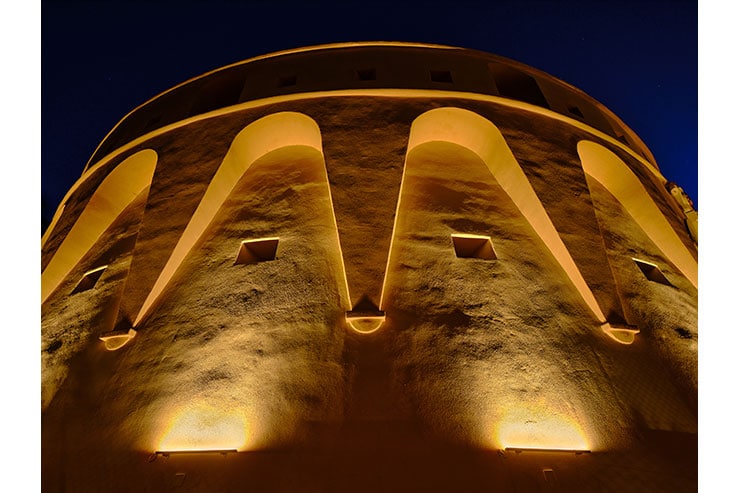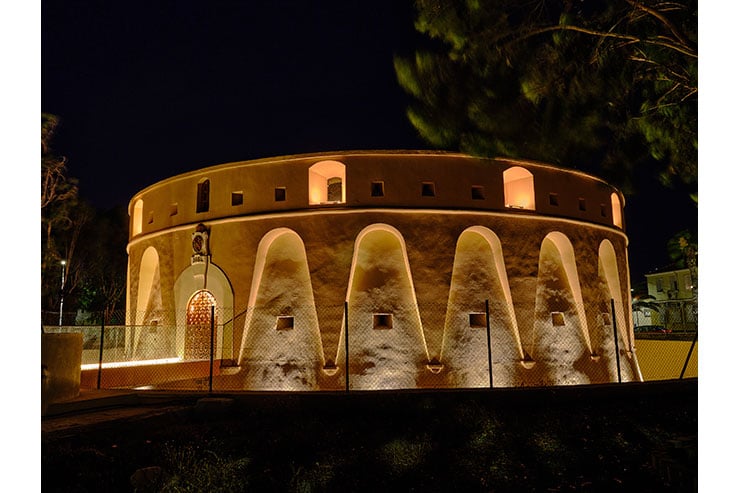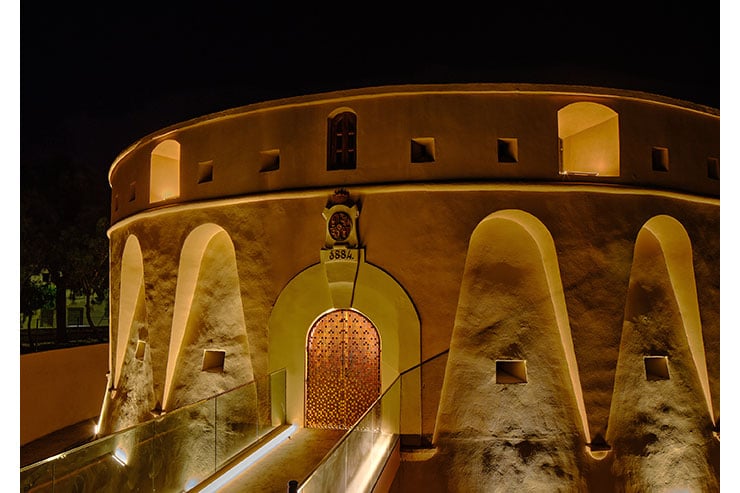This website uses cookies so that we can provide you with the best user experience possible. Cookie information is stored in your browser and performs functions such as recognising you when you return to our website and helping our team to understand which sections of the website you find most interesting and useful.
The Camel's Fort, Spain
ProjectThe Camel's FortLocationMelilla, SpainLighting DesignDCI Lighting Design, SpainArchitectM. Najim Bourich, SpainClientCiudad Autonoma de MelillaLighting SuppliersLED Linear, CasambiPhotographyMartin Garcia Perez
The play of light and shadow on the canvases of the Camels Fort contributes towards featuring the most significant landmarks of this 19th-century construction, which go unnoticed during the day but at nightfall, are highlighted by reinterpreting the space as if everything had been magically flooded. With a total power of 350 W at its maximum intensity, significant energy savings are achieved, and the control systems adapt the consumption to each need according to the time of use autonomously while creating changing scenes for a greater dynamism of the space.
The project to extend the fortifications of Melilla, drawn up back in 1867, proposed several watchtowers, including one on the Cerro Camellos. It was finally completed in May 1885.
The lighting system at the time consisted of 400 W Metal Halide flood projectors, which consumed a lot and rendered a flat interpretation of the space at night and during electrical hours, which made it go unnoticed.
Taking advantage of the refurbishment project that Fort Los Camellos was to undergo, the Mnb Architecture studio headed by Mr Mohamed Najim Bourich included the replacement of the lighting equipment in the project, entrusting this task to an Architectural Lighting Design studio, thus making it possible for the new electrical infrastructure to be integrated into the architecture. We opted for a lighting design that, through the play of light and shadow, would highlight the most important landmarks of this heritage site and endow a more accentuated and dramatic vision than that visitors perceive during daylight hours. The use of luminaires with special 15X40º optics for grazing lighting was planned so the emission of light to the upper hemisphere would be as minimal as possible while generating this chiaroscuro between the defensive face and the crown that surrounds it. There is negative lighting in the metallic latticework of the main entrance and grazing lighting on the access bridge with flexible LED strips IP66. Besides, the facilities are fitted with a Casambi Bluetooth control system that allows the 350 W of the total consumption of the installation to be optimised to minimum levels as and when needed while generating changing lighting scenes throughout the night that offer greater dynamism of the space.







